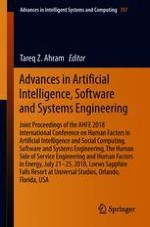2019 | Buch
Advances in Artificial Intelligence, Software and Systems Engineering
Joint Proceedings of the AHFE 2018 International Conference on Human Factors in Artificial Intelligence and Social Computing, Software and Systems Engineering, The Human Side of Service Engineering and Human Factors in Energy, July 21–25, 2018, Loews Sapphire Falls Resort at Universal Studios, Orlando, Florida, USA
herausgegeben von: Tareq Z. Ahram
Verlag: Springer International Publishing
Buchreihe : Advances in Intelligent Systems and Computing
